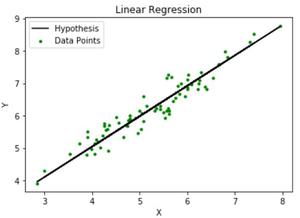多层感知器和线性回归之间的区别
多层感知器 (MLP) 是一种人工神经网络,具有3 层或更多层感知器。这些层是 - 单个输入层、1 个或多个隐藏层和单个感知器输出层。数据从输入层->隐藏层->输出层沿单一方向流动,即向前。反向传播是一种技术,多层感知器接收关于其结果中的错误的反馈,MLP 相应地调整其权重,以便在未来做出更准确的预测。 MLP 用于许多机器学习技术,如分类和回归。它们已被证明可以为分类问题提供高度准确的结果。
回归是一种近似连续值变量的监督机器学习技术。它通常用于根据自变量的值来预测/预测值。回归问题可以被认为是有一个没有激活函数的输出神经元。

多层感知器

线性回归图
这些是多层感知器和线性回归之间的区别—— Multi-layer Perceptrons Linear RegressionMulti-layer perceptions are a network of neurons that can be used in binary/multiple class classification as well as regression problems. A linear regression model determines a linear relationship between a dependent and independent variables. The output function can be a linear or a continuous function. It need not be a straight line. The output function is linear and can be represented in a straight line. An MLP has multiple layers of neurons with an activation function and a threshold value. A linear regression model has no activation function or threshold value. An MLP usually has multiple inputs through its 1 or more input neurons. Simple Linear regression requires only a single input- the value of the independent variable- to predict the value of the dependent variable. MLPs are mostly used for supervised learning but has been used in unsupervised learning for clustering in rare examples like Kohonen Self Organizing Map. Regression is a supervised learning technique. Areas of Application of MLP include- Pattern Recognition, Autonomous Vehicle driving, Social Media Recommendations, etc. Areas of application of Linear Regression include – prediction of housing prices, prediction of sales for a business, prediction of crop yield w.r.t. rainfall, etc.